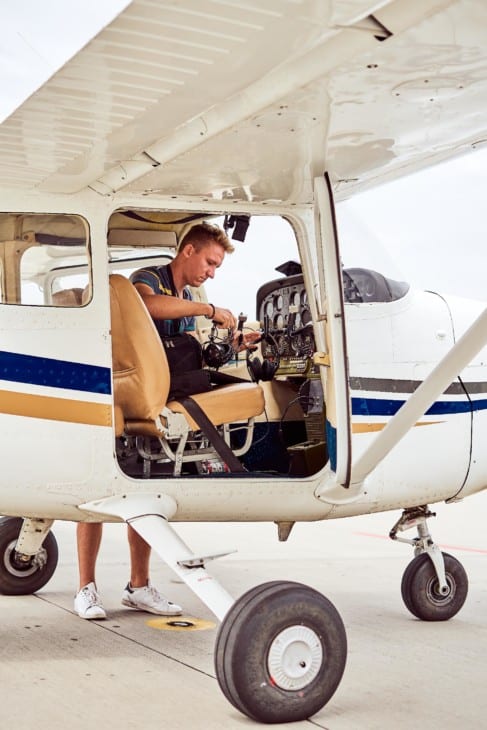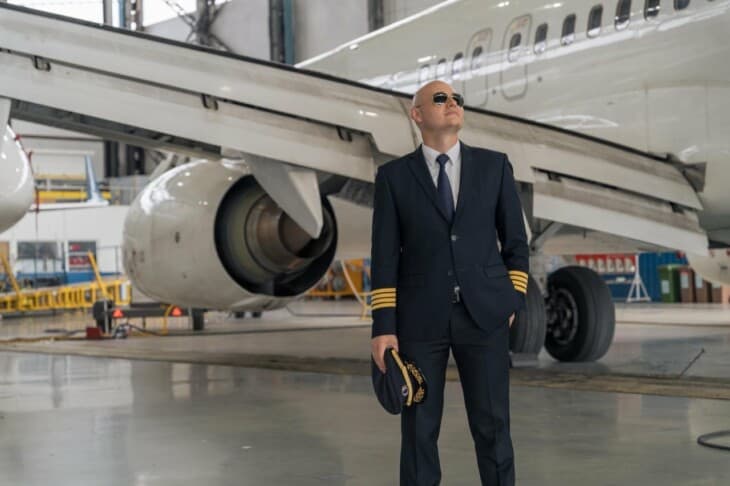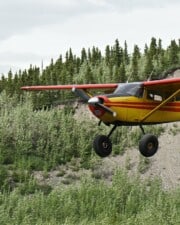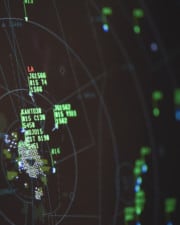To most people, a pilot’s license is a pilot’s license. To pilots, however, it’s somewhat different, with different pilot ratings allowing pilots to fly different types of aircraft under different circumstances and conditions.
It should be noted that the types of pilot ratings that exist differ from country to country, with some licenses simply not existing in some jurisdictions or having two distinct licenses amalgamated into one depending on the jurisdiction.
For the purposes of this article, we’ll be focusing on those pilot ratings available in the US per FAA regulations.
Rating and Certification: What’s the Difference?
This article is about pilot ratings. Before we get started, it’s important to understand how pilot rating is different from pilot certification. There are seven levels of pilot certification: Unmanned Aircraft Systems (UAS), Sports Pilot, Recreational Pilot, Private Pilot, Commercial Pilot, Flight Instructor and Airline Transport Pilot (ATP).
Ratings make clear what equipment, and/or how, a pilot is qualified to fly. Certification is authorization to fly airplanes at one or more privilege levels. In other words, rating is equivalent to operating privilege. Certification equates to privilege level.
A pilot can add a rating to his or her certificate, to widen their opportunities.
Type Ratings
To fly any kind of turbojet airplane in the USA, pilots must almost always have completed type rating on that specific aircraft type. I say almost always because there are exceptions.
In cases of very similar aircraft types, such as the Boeing 757 and 767, a pilot who is type rated on one airplane can transition to the other by doing ‘difference training’. Many Boeing 787 pilots are difference-trained B777 pilots.
That means the first officer on your next 787 flight might never have flown the actual 787 before – he or she may have just completed ground school and simulator training to transition from the T7 to the Dreamliner.
Thus, a type rating on one aircraft can be converted to a type rating on a similar one, without ever leaving the ground.
That might sound scary from a passenger’s point of view, but it happens all the time and it’s fine, provided the difference training has been completed thoroughly and the pilot has a good grasp of how the systems on the new airplane differ from those on the old one.
How Do You Get Each Pilot Rating?
Private Pilot Rating
To qualify for a Private Pilot rating in the USA, you must have 40 hours of flight time under your belt. You must be at least 17 years old to gain a private pilot license, although you can begin your training at a younger age.
You must pass either the FAA third class medical, or the BasicMed, in order to become private pilot rated. You must be able to speak and understand English.

The Private Pilot Rating entitles you to fly a single-engine airplane in VFR (Visual Flight Rules) conditions, during daytime or nighttime. You are permitted to carry passengers – something a student pilot is not allowed to do, because a student pilot cannot be pilot-in-command of an aircraft that is carrying passengers.
After completing a ground school or self-study program, and logging 40 hours of flight time, you can take the Private Pilot FAA Written Examination, and the Private Pilot check ride (which has oral and airborne parts.) Having passed both the exam and the check ride, you are rated as a Private Pilot.
While preparing for your PPL, you can expect to pay around $80 per hour for a flight instructor, and around $120 for the basic medical examination. If you study full time for your PPL, it will probably take about two months in total.
A private pilot rating does not permit you to fly passengers for revenue.
Instrument Rating
The next step after gaining your private pilot’s License is to gain your instrument rating, should you so wish. Becoming instrument rated allows you to fly in non-VFR conditions, broadening your scope as a pilot.
Instrument Rating (IR) requires thorough training on flying an airplane by reference to instruments alone, with no external visual cues. To fly in instrument meteorological conditions (IMC), you must have an instrument rating.
Once you are instrument rated, you will be able to file and fly an IFR (instrument flight rules) flight plan, and fly your airplane in the same air space as jet aircraft.
To gain your instrument rating, you usually need to put in seven weeks of study after gaining your PPL, although it can be done in as little as two weeks.
Getting your instrument rating will enhance your safety as a pilot, as well as opening up the skies to you when visual flight is not possible.
You must be able to read, write, speak and understand English. You will need to attend ground school or undertake self-study on flight planning and filing, navigation, airplane systems, air traffic control, emergency operations and weather.
You must complete 40 hours of instrument flying time before you can gain your rating.
Multi-Engine Rating
You can go for your multi-engine rating at any point after gaining your private pilot rating. The multi-engine rating can be added to a private, commercial or ATP certificate. You do not need to reach a flight time requirement and there is no knowledge test – you just need to pass a check ride.
Commercial Pilot Rating
To be eligible for the commercial rating, you must have reached 250 hours of flight time. You will need to pass a knowledge test and a check ride. Expect the process to take around five months. You will need to have passed at least the second class FAA medical certificate.
Airline Transport Pilot Rating
This is the last and highest of the pilot ratings. To be eligible, you must have logged 1500 hours, and you must have passed the FAA first class medical certificate in order to fly as pilot-in-command.
You need to have either military flying experience or both commercial and multi-engine ratings, and you must be at least 23 years old. Once those requirements are satisfied, you can gain your ATP rating in just a few days.
Once you have passed the knowledge test and check ride, your ATP rating is valid forever, provided you have always flown at least three takeoffs and landings in the last 90 days.
Now we’ve seen how to get each rating (flight hours, medical requirements), and the kind of flying you can do when you have each rating, let’s look at the different medical certificates.
Medical Certification
There is a gradation of medical certificates, from the basic certification required for private flying, to the most exacting medical clearance needed for airline transport flying. Here are the stages of medical fitness, in ascending order.
BasicMed
Like it says on the tin, BasicMed is the first step on the pilot’s medical certification stairway. You need a current and valid US Driver’s License, and you must have held a valid medical certificate after 14 July, 2006.
You will need to get a physical examination from a licensed physician, as per a Comprehensive Medical Examination Checklist. You must also complete a free BasicMed online course.
Before opting for BasicMed, check out what aircraft you will be flying, and where you will be flying. BasicMed is not suited to all airplanes and destinations. Your airplane must not weigh more than 6,000 lbs and must carry no more than six persons including the pilot.
You must fly at or below 18,000 ft MSL, at a speed of 250 knots or lower. Your flight must not be for compensation or hire and you must be flying recreationally.
As a basic requirement, you must not be suffering from any medical condition such as a mental health disorder, a neurological disorder or a cardiovascular condition.
3rd Class Medical Certificate
The 3rd Class Medical Certificate is suited to private, recreational or student pilots. You must meet eye, ear, nose and throat minima, as well as mental health standards. You must be prepared to disclose your medical history.
If you’re over 40, you must renew your 3rd class medical certificate every two years. If you are under 40, you must renew it every five years. As with BasicMed, you must be flying recreationally and not for any kind of remuneration.
It’s stated in the regulations – although, I’m sure you will agree, it’s obvious – that the 3rd Class Medical Certificate is not for commercial or airline pilots.
2nd Class Medical Certificate
The 2nd Class Medical Certificate is for pilots who carry passengers or cargo for recompense. The 2nd Class Medical Certificate involves higher standards of vision than the 3rd Class Medical Certificate, including a color vision test.
To fulfill the requirements for the 2nd Class Medical Certificate, you must be able to demonstrate 20/20 vision, with or without correction. You must pass a color vision test and meet all standards. You must renew your certificate every year and you are not permitted to fly for transportation airlines.
1st Class Medical Certificate
The 1st Class Medical Certificate is for Airline Transport Pilots. If that is where your career is headed, this is the medical certificate for you. You must demonstrate 20/20 vision with correction if needed, and you must meet neurological and mental standards.
To pass the 1st Class Medical Certificate, you must submit a satisfactory ECG at age 35. At 40 years of age, you must get another ECG, and you must repeat it annually thereafter.
Related Posts













